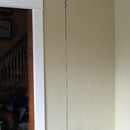Introduction: Repurposing a Power Supply From the Macintosh PowerPC 7500
OK, I'll admit, this is a thin instructable, but I’m recording this project because there seems so little about the subject on the Internet. Specifically, there's a lot of information and examples for repurposing PC power supplies, but almost nothing on repurposing Apple Macintosh power supplies.
I've had this PSU lying around since I discarded the rest of the machine (motherboard quit), and now that I'm exploring the Arduino, I need a quality power supply for breadboarding.
Step 1: Inquiry and Accident
I felt pretty silly when I plugged in the power supply and nothing happened.
Resorting to searching the Internet, I found hints from the PC world that there was no reason to believe that the power supply was dead. In the PC world, the motherboard actually turns on the power supply. More accurately, there are lines from the power supply that are used to turn it on.
It makes sense. The ON switch for a Mac can be on the keyboard, which must clearly pass through the motherboard.
So the hunt was on to find the controlling wires that would perform the trick.
Each of the two motherboard connectors (a large 22-pin and a smaller 10-pin) has a few odd coloured wires amongst the black (presumably ground wires) and the rows of orange, red, and brown (presumably supply voltage).
I prepared a wire to insert into the pins, and tested them by touching the wire to ground (the power supply case).
As I was getting nowhere, and wasn't really comfortable with the risk of accidentally blowing the power supply, I decided to dive into the case to gather a little more information.
After taking note of the warnings, and mindful that the capacitors can still hold a dangerous charge, I carefully took off the covers and tried to avoid touching any inner wires/circuit.
I found that the PCB had some helpful notes, identifying each of the wires going to the various connectors.
+5v TRKL wire is yellow
-sense wire is grey
+sense wire is white
+5V is red
+12V is orange
+3.3V is brown with white print
PFW is brown with black print
With this information in hand I felt confident that the sense wires would be the ticket. So I closed up the case, plugged in the PSU, and used the wire to bridge the two sense pins, which are both found in the 10-pin connector.
Still no response.
In desperation, and ignoring all of my good intentions at proceeding safely, I almost randomly began to connect the wires in the most likely combinations.
As I’m still here to write this, you know how this turned out. I found the correct combination before I blew myself up.
So here it is, the secret to turning on the PowerPC 7500 PSU, discovered at significant risk to limb and life, and reported so that nobody else needs to repeat my dangerous mistakes.
o Both wires are found in the large 22-pin connector.
o Connecting the yellow wire (+5V trickle) to the brown wire (PWF) will turn on the balance of the PSU. The fan wil start up and you can now measure correct voltage across all of the brown (+3.3V), red (+5V), and orange (+12V) wires.
Step 2: Postscript: Finishing It Into a Bench-top Power Supply
Turning this perfectly good power supply into a bench-top supply for breadboarding is now straightforward.
The idea is to connect the yellow (+5V TRKL) and brown (PWF) lines through a switch so that you can conveniently control the unit. I've added an LED, which I admit is superfluous as the fan provides an audible clue that the unit is on... but it looks nicer this way.
You'll need a few parts:
-switch
-LED
-LED holder to mount the LED in a panel
-resistor to limit the current through the LED and thereby protect it
The first steps are to cut the wires at the connector and free them from the bundles so that they do not exit the power supply case.
You'll need to prepare the switch, soldering the LED and resistor in series to one of the switch's legs. Depending on how you oriented the LED, you'll need to choose which line to connect to the LED and which to connect to the other switch leg... but you already knew that. Just saying that some planning is required to avoid frustration.
The last steps are to cut the required holes in the case and mount the LED and switch.













